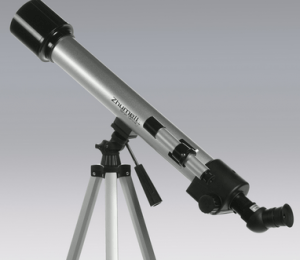Construction of world’s largest telescope advances
 The Board of Directors of the Square Kilometre Array (SKA) have agreed to move the world’s largest radio telescope forward to its final pre-construction phase.
The Board of Directors of the Square Kilometre Array (SKA) have agreed to move the world’s largest radio telescope forward to its final pre-construction phase.
The design of the 650 million euros first phase of the SKA is now defined, consisting of two complementary world-class instruments, one in Australia and the other in South Africa, which are expected to deliver exciting and transformational science.
Professor Philip Diamond, Director General of the SKA Organisation, said: “I was impressed by the strong support from the Board and the momentum to take the project forward,” in a release to the Ghana News Agency.
“The SKA will fundamentally change our understanding of the Universe. We are talking about a facility that will be many times better than anything else out there,” he said.
The international project is currently in its design phase consisting of 11 nations namely; Australia, Canada, China, Germany, India, Italy, New Zealand, South Africa, Sweden, the Netherlands and the United Kingdom.
It has been engaged over the last 20 months in a rigorous and extremely challenging science-driven, engineering process with teams from around the world working to refine the design of the phase one.
According to the release, South Africa would host about 200 parabolic antennas or dishes -similar to, but much larger than, a standard domestic satellite dish-, and Australia more than 100,000 ‘dipole’ antennas, which resemble domestic TV aerials in the first phase.
Professor Robert Braun, Science Director of the SKA Organisation, said: “Thanks to these two complementary instruments, we will address a broad range of exciting science, such as observing pulsars and black holes to detect the gravitational waves predicted by Einstein, testing gravity, and looking for signatures of life in the galaxy.
“We will also observe one of the last unexplored periods in the history of our Universe, the epoch of re-ionisation, looking back to the first billion years of the Universe at a time when the first stars and galaxies are forming.”
The Australian SKA Pathfinder (ASKAP) telescope, a precursor telescope already operating as a first-class instrument in its own right in Western Australia, will continue to provide world-leading survey capability which will complement the overall SKA programme.
Professor Brian Boyle, Australia’s SKA Director said: “The Australian astronomical community is delighted to be working with their colleagues from around the world in one of the most thrilling science endeavours of the 21st century.”
“This outcome recognises the confidence the global community has placed in the world-class observatory we have built in Western Australia and the leading-edge radio-astronomy technology Australia has developed for the pathfinder telescopes located there.”
“The next step is to work with the SKA partner countries to develop an international Organisation before the start of the construction in 2018,” said Professor John Womersley, Chair of the SKA Board of Directors.
Source: GNA
